Naomi Feinberg: the sculptor who carved a place for herself in a man’s world
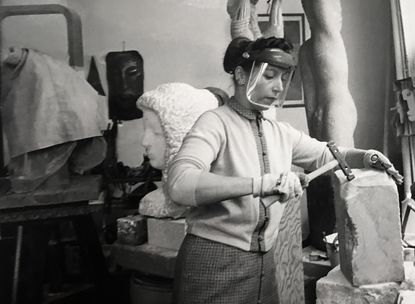
Lobel Modern has unveiled a compelling display of work from the late artist Naomi Feinberg, a woman at the helm of American 20th-century sculpture. Focusing on 14 mid-career pieces from the 1960s and 1970s, the exhibition coincides with the 10th anniversary of the New York Design Center, where the showroom is located.
Gallerist Evan Lobel first encountered Feinberg in his original Chelsea gallery in the early 2000s, when she was already well into retirement. She expressed an appreciation for his curation, and he in turn fell for her ‘primitive yet sophisticated’ constructions.
Composed primarily of limestone, granite and marble posed on circular or cubic plinths, Feinberg’s sculptures radiate a hand-carved physicality, harmonising the materials’ characteristics with the imprints of her own body. Feinberg references cubism, African and pre-Columbian art to create multifaceted anthropomorphic forms. Sinuous curves meet abrupt cubic blocks as the artist fuses hard-edged architectural configurations with elements of the human form.

Resilience, c1970s, by Naomi Feinberg, white and orange marble
Born Naomi Levine in New York in 1919, she grew up during the Great Depression. At 17, she met and married writer, painter and book designer Sidney Feinberg, drawn together by a mutual passion for the visual arts. As a young woman in postwar America, she first found creative solace in needlework and fashion, later turning to ceramics before establishing her groove in stone.
In the early 1940s, Feinberg studied alongside the likes of Jose De Creeft and Lorrie Goulet at the New School, the Museum of Modern Art, the Art Students League, and the School of Visual Arts. She discovered a kindred spirit in constructivist painter and sculptor Dorothy Dehner while they were both members of the Studio 725, an alliance of female artists who maintained a studio at Union Square. (A number of Dehner’s sculptures still bear carved inscriptions dedicated to Feinberg.)
A relative latecomer to the art world, Feinberg undoubtedly made up for lost time with a vast and accomplished body of work to her name. She has been represented in numerous exhibitions staged by the Federation of Modern Painters and Sculptors, while her work is held in the archives of American art at the Smithsonian Institute.
The Lobel Modern show demonstrates Feinberg’s resilience in becoming one of the foremost 20th-century artists – a woman boldly sculpting in a man’s world.

Tenero, c1960s, by Naomi Feinberg, Vermont marble

Dream within Dream, c1960s, by Naomi Feinberg, Italian marble

Stretto, c1960s, by Naomi Feinberg, Vermont marble
INFORMATION
‘Naomi Feinberg: A Woman Sculpting in a Man’s World’ is on view until 14 November. For more information, visit the Lobel Modern website
ADDRESS
Lobel Modern
New York Design Center
200 Lexington Avenue
New York
Wallpaper* Newsletter
Receive our daily digest of inspiration, escapism and design stories from around the world direct to your inbox
Harriet Lloyd-Smith was the Arts Editor of Wallpaper*, responsible for the art pages across digital and print, including profiles, exhibition reviews, and contemporary art collaborations. She started at Wallpaper* in 2017 and has written for leading contemporary art publications, auction houses and arts charities, and lectured on review writing and art journalism. When she’s not writing about art, she’s making her own.
-
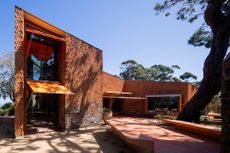 Burnt Earth Beach House is an experimental retreat crafted in terracotta
Burnt Earth Beach House is an experimental retreat crafted in terracottaThe experimental Australian Burnt Earth Beach House by John Wardle breaks new ground in material composition, using baked earth for warmth, texture and tonality
By Ellie Stathaki Published
-
 The rich culture of India is celebrated in Milan with Gunjan Gupta's Indian Tiny Megastore
The rich culture of India is celebrated in Milan with Gunjan Gupta's Indian Tiny MegastoreDuring Milan Design Week 2024, Gunjan Gupta's Indian Tiny Megastore curated by Maria Cristina Didero brings Indian culture to the city
By Sujata Burman Published
-
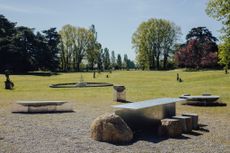 Alcova 2024 offers up contemporary independent design in historical domestic backdrops
Alcova 2024 offers up contemporary independent design in historical domestic backdropsAlcova 2024 moved to Varedo to take over the spaces of Villa Bagatti Valsecchi and Villa Borsani (on view until 21 April)
By Sujata Burman Published
-
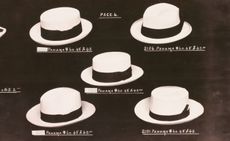 The Met’s ‘The Real Thing: Unpacking Product Photography’ dissects the avant-garde in early advertising
The Met’s ‘The Real Thing: Unpacking Product Photography’ dissects the avant-garde in early advertisingA new exhibition at The Metropolitan Museum of Art in New York explores the role of product photography and advertising in shaping the visual language of modernism
By Zoe Whitfield Published
-
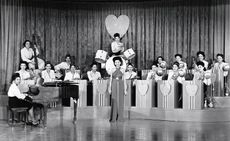 Detroit Institute of Arts celebrates Black cinema
Detroit Institute of Arts celebrates Black cinema‘Regeneration: Black Cinema 1898-1971’ at the Detroit Institute of Arts (DIA) brings lost or forgotten films, filmmakers and performers to a contemporary audience
By Anne Soward Published
-
 BLUM marks 30 years of Japanese contemporary art in America
BLUM marks 30 years of Japanese contemporary art in AmericaBLUM will take ‘Thirty Years: Written with a Splash of Blood’ to its New York space in September 2024, continuing its celebration of Japanese contemporary art in America
By Timothy Anscombe-Bell Published
-
 Todd Gray’s sculptural photography collages defy dimension, linearity and narrative
Todd Gray’s sculptural photography collages defy dimension, linearity and narrativeIn Todd Gray’s New York exhibition, he revisits his 40-year archive, fragmented into elaborated frames that open doors for new readings
By Osman Can Yerebakan Published
-
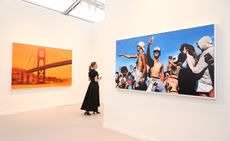 Frieze LA 2024 guide: the art, gossip and buzz
Frieze LA 2024 guide: the art, gossip and buzzOur Frieze LA 2024 guide includes everything you need to know and see in and around the fair
By Renée Reizman Published
-
 Peter Blake’s sculptures spark joy at Waddington Custot in London
Peter Blake’s sculptures spark joy at Waddington Custot in London‘Peter Blake: Sculpture and Other Matters’, at London's Waddington Custot, spans six decades of the artist's career
By Hannah Silver Published
-
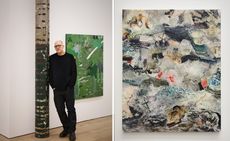 New York artist Christopher Astley showcases an alternative natural world
New York artist Christopher Astley showcases an alternative natural worldAt Martos Gallery in New York, Christopher Astley’s paintings evoke an alternative natural world and the chaos of warfare (until 16 March 2024)
By Tianna Williams Published
-
 Oozing, squidgy, erupting forms come alive at Hayward Gallery
Oozing, squidgy, erupting forms come alive at Hayward Gallery‘When Forms Come Alive: Sixty Years of Restless Sculpture’ at Hayward Gallery, London, is a group show full of twists and turns
By Hannah Silver Published